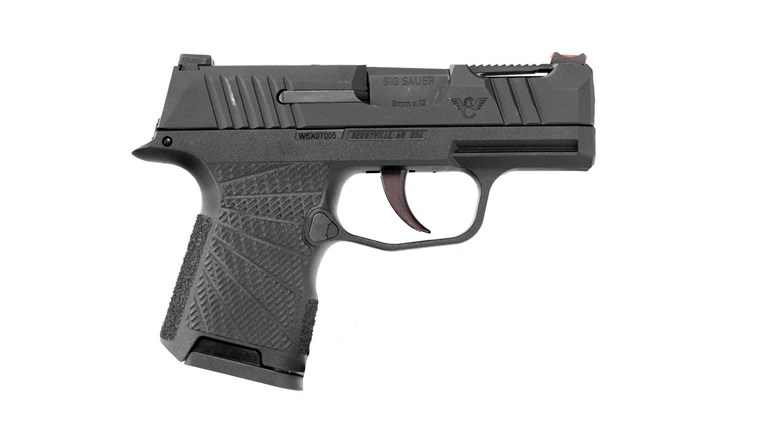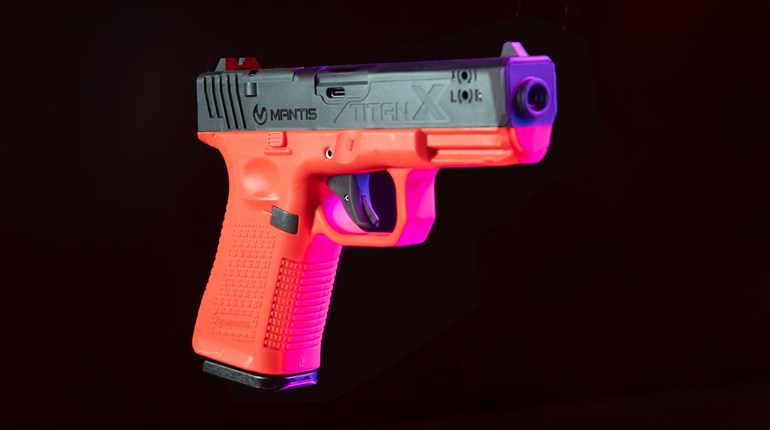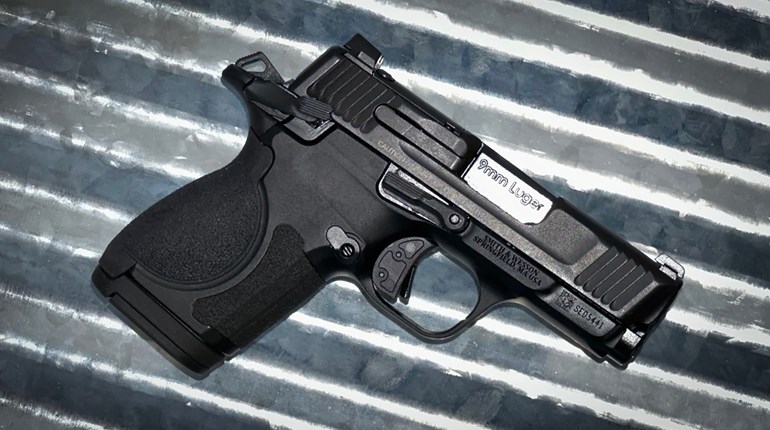
If you read just about any gun-related magazine or website, you’ll see articles and advertisements talking about how the latest gun or gadget will help you hit the target. To be fair, a lighter, shorter trigger pull means there’s less of a chance you’ll move your gun as you press the trigger to the rear, and a new set of sights or a red dot optic can improve your chances of hitting the target on-demand. There’s also the fact that a less-powerful cartridge in a heavier gun is going to recoil less than a powerful cartridge in a smaller gun. As a result, we tend to look to a new gun or a new accessory as the solution when our accuracy isn’t up to our expectations. But how much of a difference does the gun actually make? Is the reason why we’re missing or shooting actually due to our firearm, or our troubles caused by our lack of skill?
In order to answer that question, we’d have to have some sort of objective, measurable standard that takes different types of guns into account. Fortunately for us, IDPA, the International Defensive Pistol Association, does exactly this with their classifier courses of fire. All of the practical shooting sports have some method of sorting out participants so that shooters of equal skill compete against each other. IDPA does this by having competitors shoot a standardized course of fire and then sorts competitors not only by their score on these classifiers but also into divisions according to the kind of guns they shot. Those divisions are:
Stock Service Pistol (SSP): This is home for full size/compact 9mm pistols that are either Double Action/Single Action (DA/SA) or striker-fired. Typical guns in this division are Glock G17s, SIG Sauer P226s and full sized P320s, Smith & Wesson M&P pistols… you get the idea.
Enhanced Service Pistol (ESP): Like SSP, just with single-action 9mm pistols with a manual safety. Common guns in this division are Browning HiPowers, single action C75s and 1911-style pistols chambered in 9mm.
Custom Defensive Pistol (CDP): The home for your 1911 in .45ACP, or any single-action .45 ACP pistol with a manual safety.
Compact Carry Pistol (CCP): If SSP is the division for the guns that people say they carry, CCP is the division for the guns that people actually carry, namely Glock G19s, Glock G48s, SIG Sauer P365s and Springfield Armory Hellcats.
Carry Optics (CO): Everything you like about ESP Division, but with either a red dot optic or a laser sight on your pistol.
Revolver (REV): .38 Special revolvers or 9mm revolvers with moon clips, six rounds maximum capacity
Backup Gun (BUG): Commonly referred to as “BUG Gun” (Yes, we know it’s recursive. Deal with it). This is all the pocket-sized pistols out there, from .380 ACP semi-automatics to snub-nosed .38 Special revolvers. Reloads are not timed in this division.
As you can see, just about every kind of defensive pistol is represented by these divisions, which means that your carry gun will slot into there somewhere. There is also a PCC (Pistol Caliber Carbine) division, but we’ll skip that in this comparison because it’s for carbines, not pistols. Now let’s look at the classifier itself.

IDPA uses two courses of fire for classifiers, a 75 round course that uses cover and movement, and a 25 round course of fire that is nothing but sending rounds downrange. We’ll use the 25 round version because a) it eliminates the variables of movement and getting behind cover and b) it’s much easier to administrate. The IPDA 25 round classifier goes like this:
Target: 1 standard IDPA cardboard target
Distance: 10 yards
Cover garment required: No
Extra shots or makeup shots allowed: No (aka “Limited Vickers” scoring).
Scoring: Raw time plus penalties (more on that later).
Stage 1
Draw pistol and fire five shots.
Stage 2
Draw pistol and fire five shots using the dominant hand only.
Stage 3
Load pistol with five rounds. Draw pistol and fire five rounds, perform a slide-lock (emergency) reload and fire five more rounds.
Stage 4
Draw pistol and fire four rounds into the target and one into to upper (“head box”) portion of the target.
Penalties are incurred for inaccurate shots. There is a eight inch diameter circle on the torso and a four inch diameter circle that incur no penalties if hit. Those are called the “Down Zero” areas of the target. Each shot that hits outside of these areas incurs a one second penalty (“Down One”), while shots further out but still hit the target are a three second penalty (“Down Three”). On top of this, each miss on the target is a five second penalty. Looking over these penalties, you begin to see that IPDA places a premium on accuracy. You could do a blazingly fast run through the classifier, but if all your shots are outside of the Down Zero area, the penalties will add up very, very quickly. So just how much difference does your gun make when shooting this classifier?
IDPA sorts out shooters into five skill levels: Novice, Marksman, Sharpshooter, Expert and Master. Here are the cumulative times for the 25 yard classifier needed to make each level. We’ll leave off the outliers, Revolver and BUG Gun, and just concentrate on the semi-automatic, 9mm or better divisions.

Switching from one division to another is only going to add or subtract one or two seconds from the score you need to advance to a higher level. Improving your ability to hit the target on-demand, however, is going to make a huge difference. For instance, there is only about a third of a second difference over the course of 25 rounds fired between what’s needed to make Master level while shooting a reasonably stock Glock G17 in the SSP division to a heavier 9mm 1911 with a lighter, shorter trigger in ESP division. However, going from Expert level to Master level in SSP division means slicing three and a half seconds off your score. Want to zoom up the ranks of IDPA or improve your real world pistol skills? Concentrate on the fundamentals of stance, grip, sights and trigger, and the rest will take care of itself.





































